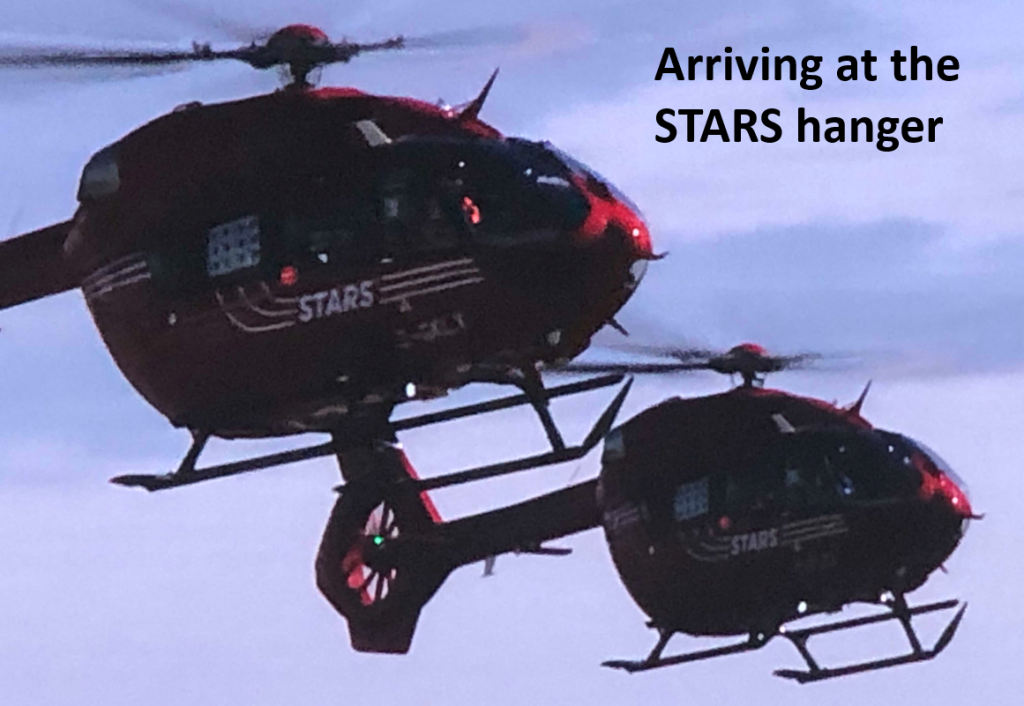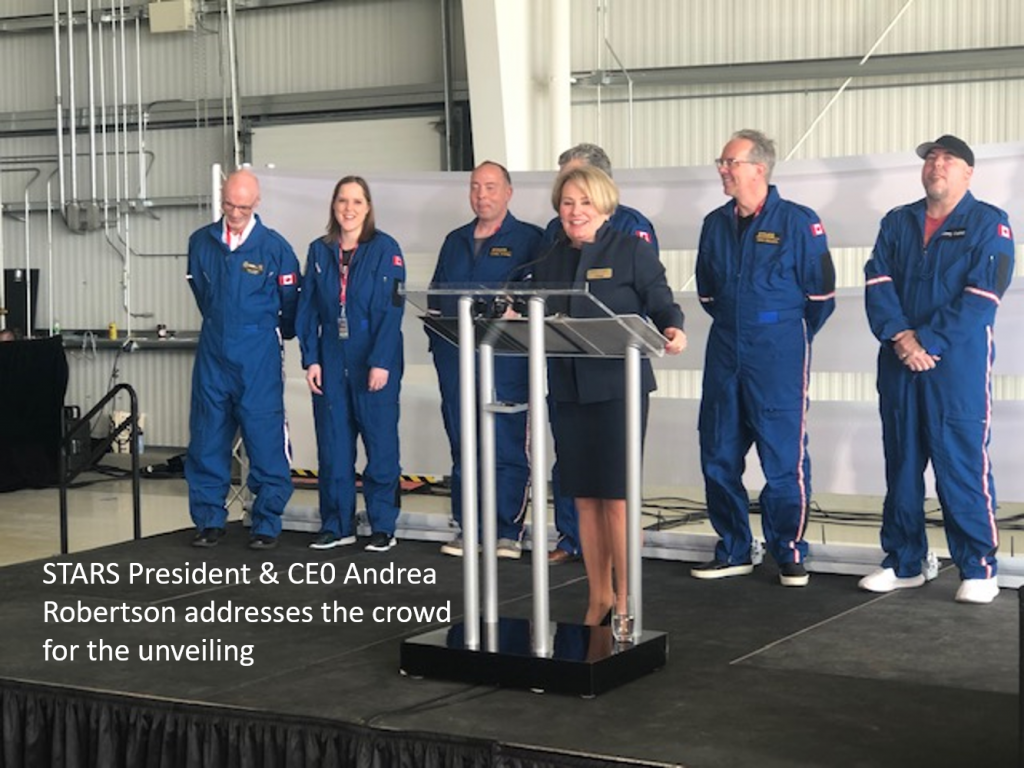STARS air ambulance showed off its two new helicopters last Thursday in Calgary, which should be ferrying critical patients around Alberta by the summer.
After an extensive review process, the Airbus H145 was selected as the helicopter to help STARS continue to provide world-class critical car to patients in need for generations to come.
The two Airbus H145’s are the first of a new fleet of nine helicopters the organization hopes to acquire, with $91 million of an estimated $117 million needed for the fleet already raised. Each new helicopter in the fleet costs $13 million. Building a new, single model fleet of helicopters is STARS’ best choice for safety, operations and cost control.
“We’re over the moon. This is an epic, unbelievable day for us,” said STARS president and CEO Andrea Robertson. “You see the beautiful machine behind us. It is 34 years newer than our current fleet.”
The air ambulance service currently has 11 aircraft in its fleet with two different types of helicopter in operation.
Robertson says converting the fleet to one type of modern helicopter will allow it to run more efficiently, and more cheaply.
Flexible interior
Greg Barton, a flight paramedic, says while the interior bears a striking resemblance to the older helicopters, the newer ones are more flexible. Monitoring equipment, for example, can be mounted in multiple locations.
“Being able to get that equipment on the patient and monitor them in a timely fashion is critical to us,” he said.
What is significant about the new craft, according to one pilot, is the navigation and safety features.
“The long and short of it is, it’s a smoother and faster ride,” Cpt. John Carson said.
The helicopter has a high level of automation, terrain awareness and collision avoidance that increases the safety factor for patients and crew, the pilot said.
STARS says the conversion of the fleet will happen one base at a time, starting in Calgary.
Pilots here have been trained. Medical crews will start training in the helicopters in May. Once all delivered, STARS says the H145 fleet will serve a similar geographic area as their existing fleet with bases in Grande Prairie, Edmonton, Calgary, Saskatoon, Regina & Winnipeg.





 CDN NEWS |
CDN NEWS |  US NEWS
US NEWS 




































Canada’s Advantage as the World’s Demand for Plastic Continues to Grow